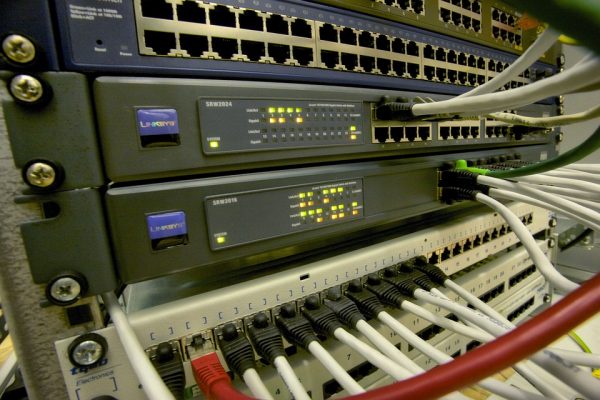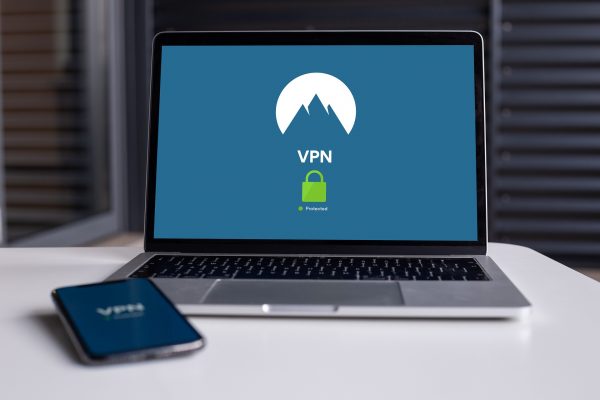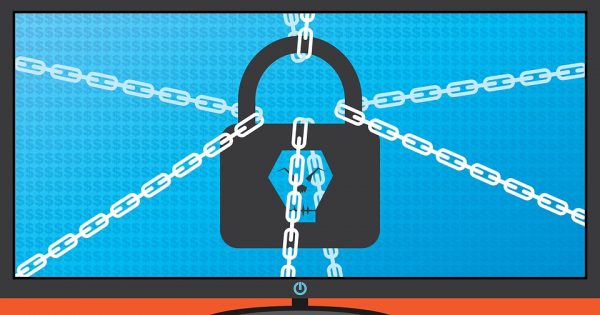Large businesses are often more prepared to handle cyber terrorism. However, cybercriminals target both public and private companies, big and small alike. From individuals to financial institutions to government agencies, no one is spared from the constant threat of cyberterrorism. Cyber threats can come from both internal and external sources. These attacks include computer viruses, ransomware, hacking attacks, and insider attacks. Poor network security can destroy your business, ruin your reputation and lead to severe economic loss. At the rate in which cyberterrorism is evolving day by day, you need to take proactive steps to secure your sensitive data. In our present day’s digital business environment, your network security management means taking practical steps to eliminate cyber threats and boost cybersecurity. If you haven’t joined the race, the time to start is now. Looking to start, but unsure what to do or where to begin? These cybersecurity best practices will set the direction and give you a big advantage!
Top 10 Cybersecurity Best Practices
1. Back up your data
Always back up your files and sensitive data. Data backup is one of the best network security practices you can adopt, especially with the advent of ransomware attacks. When such a situation arises, an updated backup of your corporate data can be a lifesaver. Backing up your data also gives you peace of mind. It helps you to remain functional in the event of malware and ransomware attacks like WannaCry and Petya. Although you can encrypt your data to make them useless if they’re hacked, hackers can also use the technology against you. Encryption can work both for and against you. These hackers can hijack your files, encrypt them and ask for ransom before you get your data back. This is where the importance of data backup becomes obvious. It offers you an additional layer of protection if something goes wrong. Besides cyber threats, backing up your files is essential. You could lose your data due to technical issues such as system crashes. Ensure you constantly update your backup files and don’t forget to split your backup tasks among a few persons to limit insider threats. Also, try to constantly create and test run your backup plans and disaster recovery efforts to ensure efficiency.
2. Encrypt your data
Ensure you always encrypt your most valuable data. Encryption is a network security practice that offers maximum protection to your data as they get transferred across a shared network or via the internet. A strong form of encryption makes your data useless to intruders and cybercriminals, saving you from potential headaches. You can begin with an encrypted password. Besides using an encrypted password, consider investing in a virtual private network (VPN). This protects your sensitive data from cyber threats by encrypting all your devices’ outgoing traffic. The data travels in an encrypted form, and only gets decrypted when it reaches its destination. If you face cybersecurity threats from hackers or data hijackers during the transfer process, your data remains safe and untouched. Avoid accessing your company’s data on public WiFi networks without a strong VPN protection. This keeps your sensitive data safe from cyber terrorism threats. You could become a victim of identity threat and face critical challenges when your data fall into the wrong hands. This is why you must take steps to keep your most sensitive data secure all the time. Besides using a VPN in public spaces, ensure your office WiFi network security is sufficiently strong. It should be encrypted and concealed. When working from remote locations, only log into the company’s network via your company’s virtual private network. If you don’t have corporate VPN, consider getting one. A VPN can secure your network security when you access the company’s data outside your office and when you’re on a business tour. Remember to use a trusted VPN with good network security.
3. Prevent data loss
Data loss is another security breach that most companies face, mainly due to insider threats. The reason for this is simple. A company’s employees are its asset. On the other hand, when a company’s data fall into the hands of fraudulent employees, their sensitive data may be vulnerable to cyber-attacks. The bitter truth is that insider threats happen all the time. Companies lose their sensitive data to cyber terrorism because their sensitive data becomes compromised by employees, either knowingly or unknowingly. Because of this, robust network security practices are vital. They help you to constantly keep an eye on the activities of your employees, contractors, and vendors. Try to regulate who has access to your company’s data and to what extent. Put data loss network security checks in place to prevent both deliberate and unintentional data breaches by your employees. Not sure how exactly to go about it? A good cybersecurity company will work with you to access your situation and put these measures in place. You can then come up with security policies to take appropriate actions against any staff that breaches any of these rules.
4. Implement access control network security processes
Access control management allows you to provide access to authorized users while at the same time limiting unauthorized intrusion into your network. Use privileged access and third party access management to limit who gains access into your company’s network and determine how much access they have. The majority of cyber threats begin with data breaches by insiders. That’s why you need to limit your employees’ access to sensitive client information. You should use privileged access, network security management to control who gets access or use customers or other employees’ sensitive information. Also, monitor the activities of third parties like business associates, consultants, contractors, remote employees, vendors, and ex-employees. Regulating third-party access is a significant part of your network security process. Limit third-party access to specific areas of your corporate network and always deactivate their access anytime they finish their contract with the company. Third-party access exposes your network to insider attacks and also creates room for malware and hacking attacks. Your best tool for prevention of third-party data breaches is regular monitoring.
5. Effective network security governance structure
Develop and maintain a clear network security governance structure. This makes it easy for your employees and cybersecurity analysts to identify potential cyber threats and take immediate steps to prevent damage. Remember to have a written and clearly defined cybersecurity policy. With a formal guide, ensure that your employees adhere to these rules. Besides, it provides you with a basic central cybersecurity system to enforce data protection rules. Also, consider creating security policies for every department of your organization based on this central policy. This ensures that you cover the network security needs of each department and keeps your company data safe at all levels of the organization. Don’t forget to follow the cybersecurity best practice guidelines provided by regulatory authorities like ISO, PCI DSS, and HIPAA. Besides complying, bear in mind that the cybersecurity needs of every industry are unique. So, while focusing on compliance, you must also keep an eye on your company-specific risks and the effects they could have on your bottom line. Regularly do risk assessment checks to prevent cases of data breaches which may lead to fines and remediation costs. Try to discover potential cybersecurity leakages and take actionable steps to return to a safe network state.
6. Train and educate users
Your employees play a major role in your cybersecurity corporate framework. Raise your employees’ awareness by training them to recognize and prevent potential threats. Insider cyber threats don’t only come from mischievous employees. Good-hearted employees frequently create loopholes for attacks unintentionally when they click on phishing emails. A single click from such spam emails opens doors for hackers to gain access to your computer network and infect your system with malware. Protect your data by creating and distributing cybersecurity best practice policies. Clearly define your company’s cybersecurity requirements for third parties and employees. Frequently organize training workshops to educate your workers on cybersecurity best practices. Teach them how to identify and deal with phishing emails. Let them know how to create strong passwords, avoid being potential victims of data hijackers. Proper education boosts organizational awareness and improves your company’s cybersecurity. Don’t forget to also use email security applications and spam filter to block the most obvious of phishing emails. Finally, ensure you always do background checks when hiring a new employee.
7. Implement safe password practices and use multi-factor authentication
You should use a long and complex password to prevent cybersecurity threats. Your password also needs to be unique. It must not be easy for others to guess, but what you can easily remember. A password that cyber terrorists can easily guess compromises your network safety. Ensure your password contains up to ten characters. This must include a mixture of numbers, symbols, as well as uppercase and lowercase letters. Remember to also change your password regularly. Although it may be challenging to regularly change and remember your passwords, there are applications to help. A good idea would be to invest in password management solutions like password vaults. Good password management is a vital part of your network security. It is particularly important for the efficient implementation of privileged access management. Such computer security solutions make passwords easy to remember. At the same time, this limits unauthorized access into your network’s privileged accounts. To further enhance your network security, remember to use multi-factor authentication. This cybersecurity strategy keeps your data safe and provides your sensitive data with an extra layer of security. It makes it difficult for cyber terrorists to access your data. Even when they correctly guess your password, they’d need to pass through multiple layers of authentication to gain network access.
8. Enable firewall protection and use intrusion detection mechanism
Firewall protection should be your primary tool for protecting your data against cyberattacks. In addition to your company’s firewall, install one for your home as well, especially if you access the company’s data using your home WiFi. A firewall prevents computer network attacks by blocking specific types of network traffic. It acts as a wall between your trusted internal network and non-trusted external networks and prevents unauthorized entrance into your corporate network. Firewalls make use of your pre-specified rules to block or allow network traffic. This network security can come in the form of software, hardware, or a combination of both. A good point to note is that firewall protection alone no longer a complete network security tool. Besides the firewall, a network security expert would use additional tools like an Intrusion Prevention System (IPS) to monitor network activities. An (IPS) is a network security tool that scans network traffics and actively blocks cyberterrorism attacks. This software commonly comes with an interface that allows you to pre-set the security rules and enable automatic updates. You can also run manual updates when necessary.
9. Invest in antivirus network security
A high-quality network security system should include anti-spam and malware solutions. Viruses and trojans compromise your computer security. These cyber-threats can remain inactive on an infected computer for days or weeks and spread across your network. Your network security strategy must, therefore, include preventive and curative measures. Aim to stop the initial virus and malware infection and invest in quality antivirus and anti-malware to eliminate any virus that enters your network. Irrespective of your business size, investing in protective measures early can save you and your employees from unpleasant legal and financial implications if any data breach occurs. Do not access your company network with any device with a weak network security software. Reputable security software helps you to fix or patch up any security vulnerability as soon as they occur. Carry out periodic antivirus and anti-malware scans to identify potential cyber threats and protect your data. Remember to invest in a full-service internet security solution to ensure immediate protection against current and up-and-coming malware attacks.
10. Install systems and software updates
Cyberterrorism methods evolve constantly. Hackers continually develop new strategies and look for potential network security flaws or computer network’s susceptibility. That is why you should constantly take steps to ensure your systems are protected. Maintaining cybersecurity best practices entails constantly keeping your software and hardware up-to-date. Antivirus and anti-malware security solutions are regularly updated to offer protection against new cyber threats. To ensure a secure network, be sure to update your company’s hardware and software. Always install the latest security updates as soon as they are released. Remember, you create a room for potential data leakages if you make use of outdated software. Cybercriminals will exploit any opportunity to gain access to your network. Cybercriminals prefer to exploit software flaws rather than hardware. However, you must also secure your hardware against any possible cyberterrorism attack. Investing in hardware upgrades help to ensure a holistic network security measure for your company’s sensitive data. The latest hardware is more resistant to cyber threats than older systems. Remember to also keep your firmware up-to-date. And consider hiring a cybersecurity analyst for periodic evaluation of your network to ensure more robust and sound network security.
Final Thoughts On Cybersecurity Best Practices
Your business data will remain in safe hands when you implement these ten cybersecurity best practices. However, remember a holistic network security approach should include both preventive, detective and reactive measures. This all-inclusive approach ensures you have the right network security architecture and configuration in place. It also gives you the necessary tools that equip you for prompt reaction in the event of potential cyber threats. Proper implementation of these network security strategies may be fairly challenging. If you’re concerned, consider engaging the services of cybersecurity companies. A cybersecurity analyst will help you to detect cybersecurity threats. He or she would work with you to implement effective network security protocols and ensure you always maintain a safe and secure network. Such professionals will offer various network security services including robust insider and outsider cyber threats’ detection solutions.




